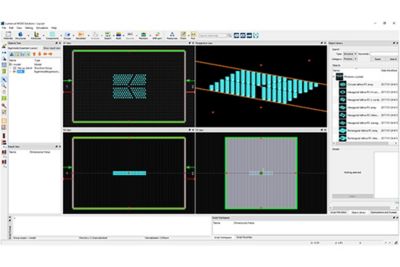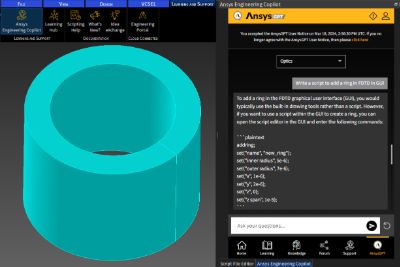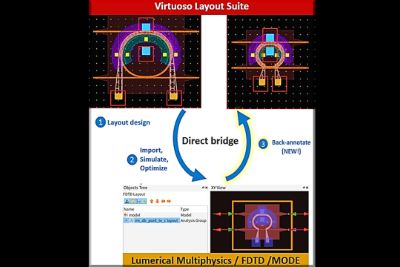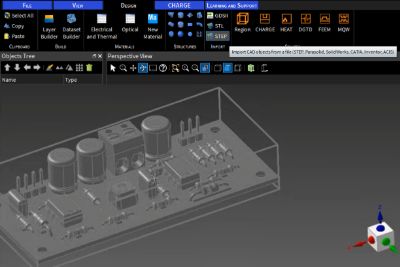簡要規格
Lumerical MODE 使用有限差分特徵模態 (FDE) 求解器、變分 FDTD (varFDTD) 求解器,以及雙向特徵模態展開 (EME) 求解器,將高精度波導模擬推向前沿。
全面的光波導設計環境
MODE 可讓您準確地建立波導和耦合器效能的模型。結合雙向特徵模態展開、varFDTD 和有限差分特徵模態求解器,MODE 可以輕鬆處理大型平面結構和長傳播長度,提供準確的空間場、模態頻率和重疊分析。

Lumerical MODE 使用有限差分特徵模態 (FDE) 求解器、變分 FDTD (varFDTD) 求解器,以及雙向特徵模態展開 (EME) 求解器,將高精度波導模擬推向前沿。
2025 年 7 月
最新版本的 Ansys Lumerical MODE 引入設計加速的新功能,包含 Ansys Engineering Copilot 以及增強的應用工作流程,包括 CAD 互通性,為次世代光子系統設計師帶來更高的靈活性與可擴展性。

Ansys Engineering Copilot 現已整合進 Ansys Lumerical MODE,可在產品內直接使用 AI 助理。

Ansys Lumerical Multiphysics / FDTD / MODE 與 Cadence Virtuoso 之間的直接橋接,現在可將最佳化的元件回傳至 Virtuoso。

Ansys Lumerical MODE 現在可以匯入來自 Parasolid、SolidWorks、CATIA、Autodesk Inventor 和 ACIS 檔案的 CAD 物件。

功能
使用 Lumerical MODE,以更快且準確的方式建立您的模型。Lumerical MODE 可讓您專注於創意和產品,而不必擔心如何使用軟體實現目標。雙向特徵模態展開和 varFDTD 引擎可以輕鬆處理大型平面結構和長傳播長度,提供準確的空間場、模態頻率和重疊分析。



對 Ansys 而言,確保所有使用者皆能運用本公司產品非常重要,身心障礙者也不例外。因此,我們致力於遵循美國無障礙委員會 (第 508 條)、Web內容無障礙指南 (WCAG)、與目前自願產品無障礙工具範本 (VPAT) 的格式等各項無障礙要求。
如果您面臨工程挑戰,我們的團隊將隨時為您提供協助。憑藉豐富的經驗和對創新的承諾,我們邀請您與我們聯絡。讓我們共同合作,將您的工程障礙轉化為成長和成功的機會。立即與我們聯絡,開始對話。